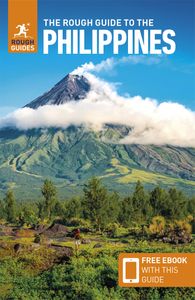Imelda Marcos
Imelda Marcos threw two parties when she turned 70 on June 2, 1999. The first was in Rizal Park, attended by the usual motley gathering of so-called Marcos loyalists. The second celebration involved 1,000 bejeweled guests at a sit-down dinner at Manila Hotel. Madame showed up with a ruby-and-diamond tiara, necklace and bracelets. Together, the parties show a continuing loyalty to her embattled late husband and a focus on personal wealth that still wows the world.
The woman born in 1929 and dubbed one half of a "Conjugal Dictatorship" fled with the ex-president to Hawaii in 1986 amid popular discontent over his iron grip, but returned after Ferdinand Marcos died in 1989.
A continuing saga of the recovery of the fabled Marcos billions unfolds sporadically, destroying the reputation of government lawyers. Ten thousand Filipino human rights victims who filed a class action suit in a Honolulu court were awarded a legal victory, but must contend with the Philippine government over the division of the token amounts recovered. Compromise solutions are ever in the works.
An enigma
Imelda confuses all, both enemies and protectors. One day, she laments her family’s reliance on the kindness of strangers; the next, she boasts that they practically own the entire country. All are public statements, as she thrives in the media limelight.
Her only consistency is that she stands by her man. Imelda regularly pulls out a handkerchief and wipes a corner of her eye, while insisting that Ferdinand Marcos was not just a brilliant hero, but a practical man who built his wealth before he turned dictator.
Born to poor relations of the landed Romualdez clan of Leyte province in the Visayas, she never forgot or forgave her early station in life. She won a beauty contest and, as Miss Manila, was swept off her feet by the dashing Marcos in a whirlwind seven-day courtship. As a partner, she enhanced Marcos’s political campaigns, singing onstage and providing glamor, or as how she describes herself, “the heart that gave the poor a glimpse of beauty.”
As Ferdinand Marcos consolidated power, Imelda became Metro Manila Governor and Minister of Human Settlements. Her love of the grand gesture prompted the building of cultural and film centers to showcase “the good, the true and the beautiful.” In 2004, the documentary film Imelda swept international film festivals. Imelda, despite having participated in its making, attempted to have its screening blocked in Philippine cinemas. The documentary was shown anyway.
Congresswoman at 81
In 2010 the 81-year-old former first lady won a congressional seat representing a part of her late husband’s native Ilocos Norte province.
In another comeback sign, ex-president Macapagal-Arroyo stopped the auction of jewelry collections confiscated from Imelda as she protested the sale of treasures worth an estimated P15 million. But Imelda Marcos is still known the world over for having owned 3,000 pairs of shoes, a testament to her glamorous tastes.






















